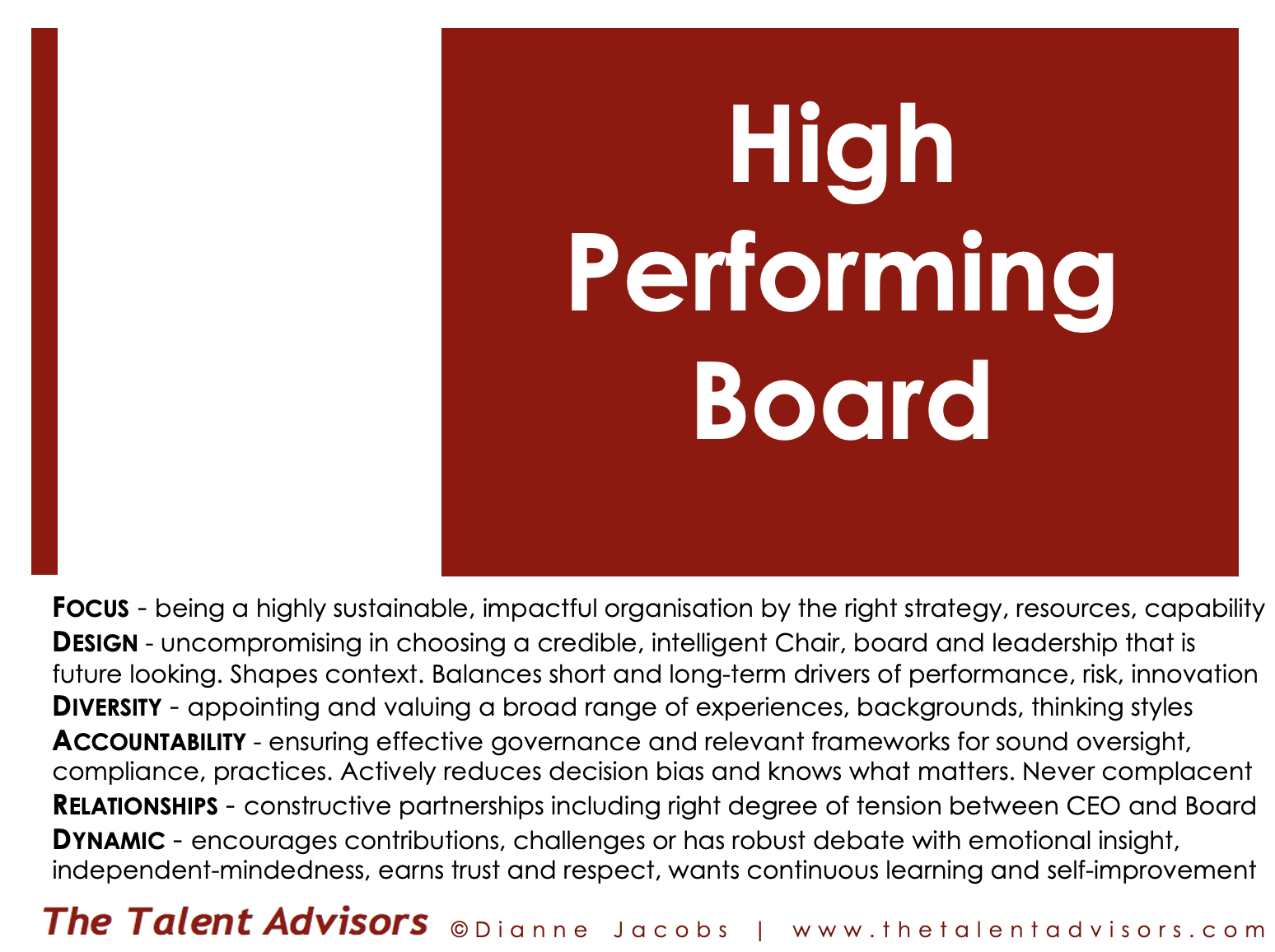A HIGH-PERFORMING BOARD
This article is part of our Insights For Action series. Join the mailing list to receive this and more.
High-performance is the aspiration of many boards – but what does this actually mean?
Certain characteristics are evident such as the calibre of the people around the table, the energy levels, a focus on what matters, a lack of complacency, constructive and robust discussions; issues being approached with intellectual rigour, data and emotional insight, the searching out of better practice, the evaluation of risk and a collective accountability.
The high-performance board, like the high-performance team, is competent, coordinated, collegial, and focused on an unambiguous goal. Such entities do not simply evolve; they must be constructed to an exacting blueprint. (David A. Nadler in HBR article ‘Building Better Boards’)
Then there is excellence in the fundamentals of business and governance, so they can be a valued counterpoint to the management team. This ensures a sound approach to the taking of growth opportunities and the stretching of the strategic direction. Organisational change work succeeds with an understanding of the nexus between process, people, behaviours and transition.
There is a productive, yet respectful tension with the CEO. They seek out the best answers together. This helps the board identify when to control and when to empower. They are effective and adaptive when making and executing critical decisions.
“Within ‘the team’ the Board provides the reflective capacity for the executive in order to improve the quality of decision-making.” (When does good governance lead to better performance? AICD report prepared by Dr Robert Kay and Dr Chris Goldspink.)
High-performing boards are more alert to potential tipping points. They draw on foresight as well as oversight. They insist on the right information at the right times. They are good at applying strategic thinking to strategic process and strategic choices, addressing the grey areas and the spaces in-between. This helps develop a more robust future direction that links back to the organisation’s core purpose.
They guard against the underlying elements of board dysfunction: a lack of independence from management or reliance on a CEO with a strong personality, diffusion of responsibility, groupthink, the missing key voices. They avoid groupthink by deep listening and with astute questions asked at the right time and in the right way to uncover needed information.
A healthy board dynamic fosters open and constructive discussions — facilitated by an effective chair — where dissenting opinions are welcomed. However, groupthink can set in if those around the table become overly comfortable or averse to challenge. A culture of not speaking up often leads to poor and incomplete decision making. There is also little space for the individualistic director with a particular issue to push, rather than taking a holistic perspective.
As we know, the agenda controls the work of the board. Agenda management is an art for the high-performing board. Together with the annual work plan and deep dives, it determines what the board discusses and at what length.
A high-performing board has a Chair who keeps a focus and accountability on what is material and sees broader drivers of success, like succession and talent, as critical for the board agenda as strategy, governance, technology, marketing or financials. They bring clarity to the interplay between the external marketplace and the internal operating systems, including culture. They see the ‘whole’ of any situation or opportunity and know that solutions involve interdependence.
High performance is a continuous and iterative process that requires the right mind-set and processes. Evaluation of the impact the board makes and the contribution of both individual directors and the management team is necessary for reflection and transformation.
Given the rapid shifts in customer, competitor, governance, cyber, climate, geopolitics and employee trends, without a focus on certain capabilities and the letting go of others, the board may not meet these demanding challenges without pushing its own performance.
Read further content for boards and directors.
WHERE IS YOUR PROBLEM-SOLVING FOCUS?
Discover what support we offer aspiring directors or be added to the distribution list for future articles.
Copyright and All Rights Reserved | About Dianne Jacobs

